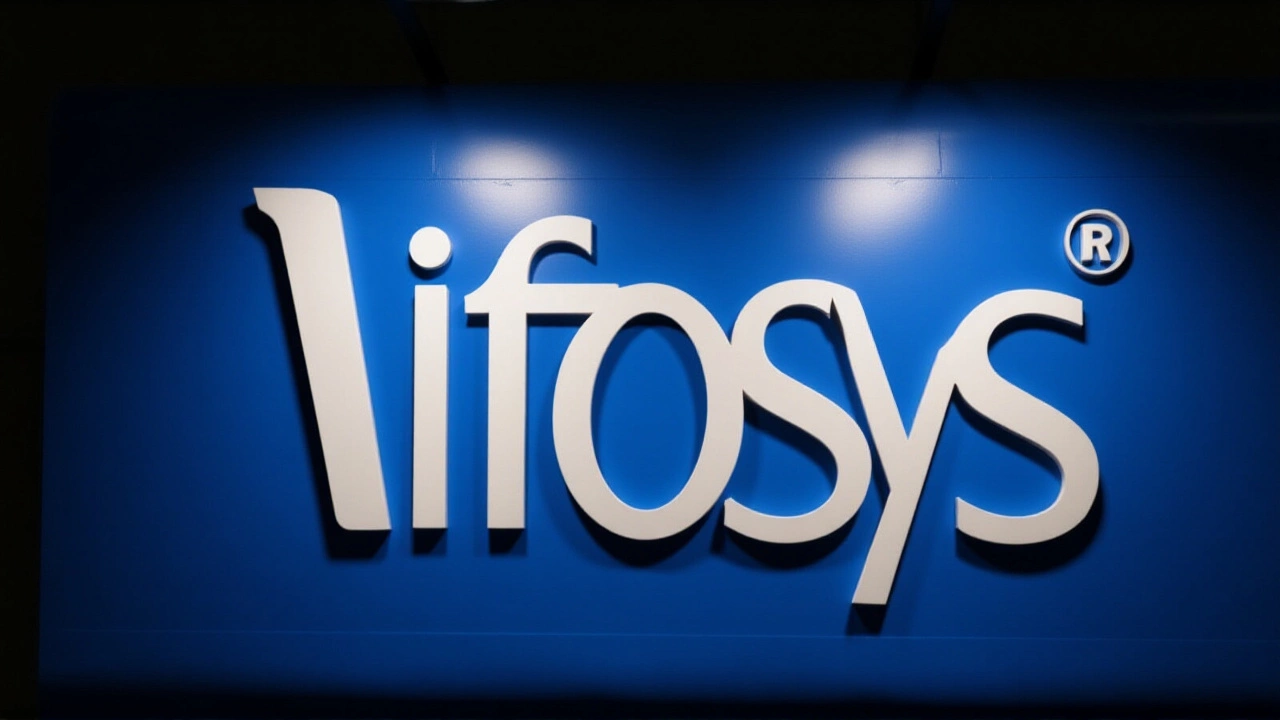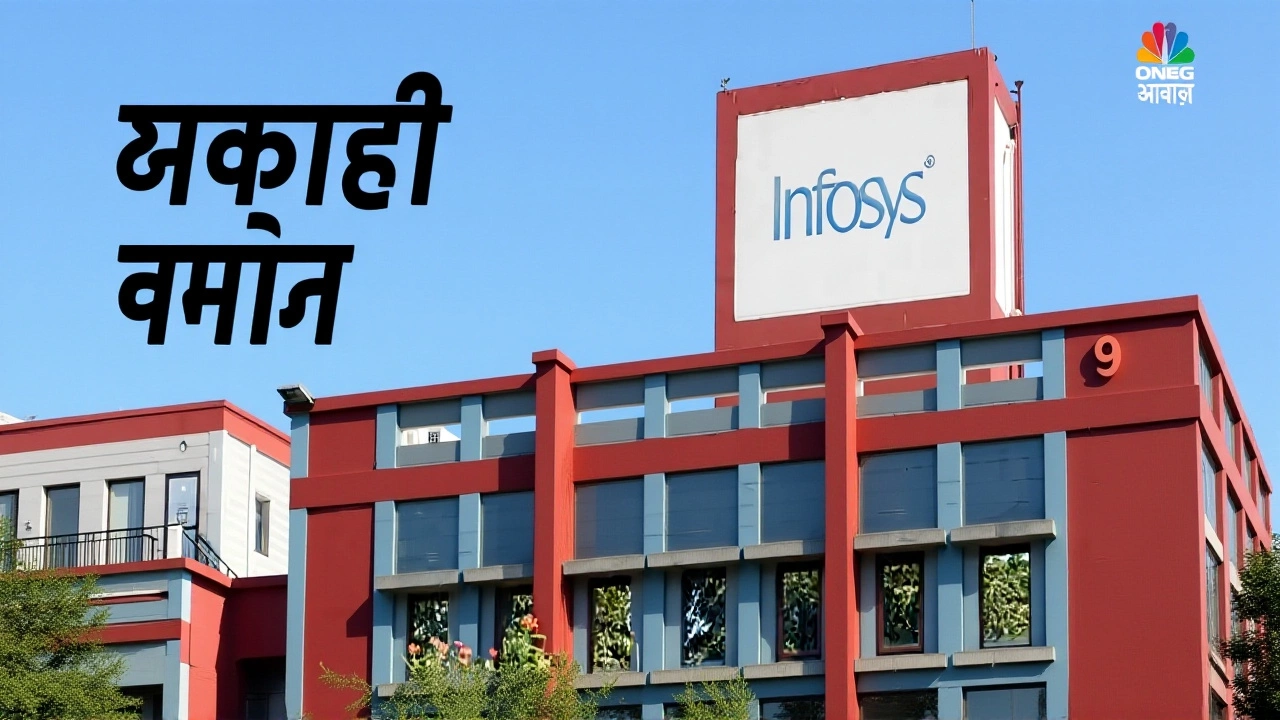When Infosys Limited disclosed its buyback plan in September 2025, the market sat up straight. The deal, worth ₹18,000 crore, will let the tech giant repurchase up to 10 crore equity shares – exactly 2.41 % of its outstanding stock – at a fixed price of ₹1,800 per share. Announced just weeks after the company posted a sizzling Q2FY26 earnings report on October 16, 2025, the move signals both confidence and a strategic shift in capital allocation.
Why Infosys is turning to a massive buyback now
Infosys’s Q2FY26 numbers were hard to ignore: net profit rose 13.2 % year‑on‑year to ₹7,364 crore, while revenue climbed 8.5 % to ₹44,490 crore. The stronger balance sheet gave the board the leeway to return cash to shareholders without jeopardising growth projects. Salil Parekh, CEO of Infosys, said in the earnings call, "We are in a position to reward our investors while continuing to invest in next‑generation technologies."
Crucially, the company’s promoters – the founding families and their trusts – announced they would not participate in the tender offer. This detail, highlighted by market watchdogs, is interpreted as a vote of confidence that the promoters intend to keep a sizeable equity stake for the long haul.
Details of the tender‑offer structure
The buyback will be executed via a tender offer, meaning shareholders submit the exact number of shares they wish to sell at the predetermined price. The offer window opens in early November and will close by the end of December 2025, though the exact record date is still pending. Only eligible shareholders on the record date – typically set a few weeks before the offer starts – can participate.
For U.S. investors holding American Depositary Receipts (ADRs), the Securities and Exchange Commission granted exemptive relief, ensuring they can join the buyback on the same terms as Indian shareholders. This cross‑border accommodation underscores Infosys’s global shareholder base.
To put the scale in perspective, ₹18,000 crore equals roughly $215 million at current exchange rates. At ₹1,800 per share, the tender price sits at a modest premium over the market price on the announcement day, designed to entice participation without inflating the share price artificially.
Market reaction and analyst viewpoints
Immediately after the announcement, the NSE Nifty IT index edged higher, and Infosys shares traded within a narrow band, indicating that investors had largely priced in the news. Ramesh Chandrasekar, senior analyst at Nirman Broking, observed, "The premium is reasonable and the size of the buyback demonstrates disciplined capital management. We expect the share price to stabilize around the ₹1,800 mark in the coming weeks."
On the flip side, some critics argue that the buyback could limit cash available for strategic acquisitions in the fiercely competitive cloud and AI services market. Nevertheless, the consensus among most brokerage houses is that the move enhances earnings per share (EPS) and delivers an immediate uplift to shareholder value.
Historical context – a pattern of shareholder returns
This is Infosys’s fifth share repurchase program since it went public in 1993. The previous largest buyback, completed in 2022, amounted to ₹9,000 crore and covered roughly 2 % of the share capital. Over the past decade, the company has interleaved buybacks with steady dividend payouts, creating a hybrid approach to returning cash.
Analysts often point to the 2020 buyback, which coincided with the pandemic‑driven surge in digital services demand, as a turning point that helped the stock outperform its peers. The 2025 programme, by contrast, appears to be a confidence signal after a period of macro‑economic headwinds, such as slower global IT spending and currency volatility.

What this means for different investor groups
Retail investors in India can submit bids through their depository participants (DPs) or the designated electronic portal. The tender window’s limited duration means they need to act quickly, especially since the offer caps at 10 crore shares – meaning not every interested party will get a full allocation.
Institutional investors, including foreign portfolio investors (FPIs), are likely to take a measured approach, balancing the premium against the need to retain voting power. The fact that promoters are sitting out could make institutions more comfortable increasing their stakes.
For ADR holders, the SEC’s exemption eliminates the need for a separate US‑based tender, effectively synchronising the process. This uniformity is expected to smoothen share price movements across exchanges.
Future outlook and next steps
The next milestones include the formal announcement of the record date, the opening of the tender portal, and the final settlement date, projected for late January 2026. Once the buyback completes, Infosys will likely see a modest boost in EPS, which could influence analyst target prices.
Beyond the immediate financial mechanics, the move reinforces the company’s narrative of disciplined capital stewardship. In an industry where margins are under pressure from rising talent costs, demonstrating the ability to generate and return excess cash may help Infosys attract and retain long‑term investors.
Finally, the simultaneous interim dividend of ₹23 per share, also announced on October 16, 2025, adds another layer of return, making the combined payout one of the most generous in the Indian IT sector’s recent history.
Frequently Asked Questions
How does the buyback affect individual shareholders?
Retail investors can tender up to the number of shares they hold, but allocation is pro‑rated if demand exceeds the 10 crore‑share limit. Those who sell at ₹1,800 per share receive a cash payout, which can be reinvested or used as they see fit. The buyback also reduces the total share count, potentially increasing the earnings per share for remaining holders.
What is the significance of promoters not participating?
When the founding families and trusts opt out, it signals that they remain committed to the company’s long‑term growth. Investors often view this as a vote of confidence that the promoters are not cashing out, which can bolster market sentiment.
Will the buyback impact Infosys’s ability to invest in new technology?
Infosys retained ample cash reserves after the Q2FY26 results, and the ₹18,000 crore allocation represents roughly 4 % of its total cash and marketable securities. Analysts expect the company can continue to fund AI, cloud, and consulting initiatives while still returning capital to shareholders.
How does this buyback compare with previous ones?
At ₹18,000 crore, the 2025 programme is the largest in Infosys’s history, dwarfing the 2022 buyback of ₹9,000 crore. The latest buyback also carries a higher premium over market price, reflecting stronger earnings momentum and a more assertive capital return policy.
What should foreign investors watch for?
Foreign portfolio investors should monitor the SEC exemptive relief filing and ensure their custodians are ready to process ADR tender submissions. Additionally, changes in the record date could affect eligibility, so staying updated via Infosys’s investor relations portal is essential.
